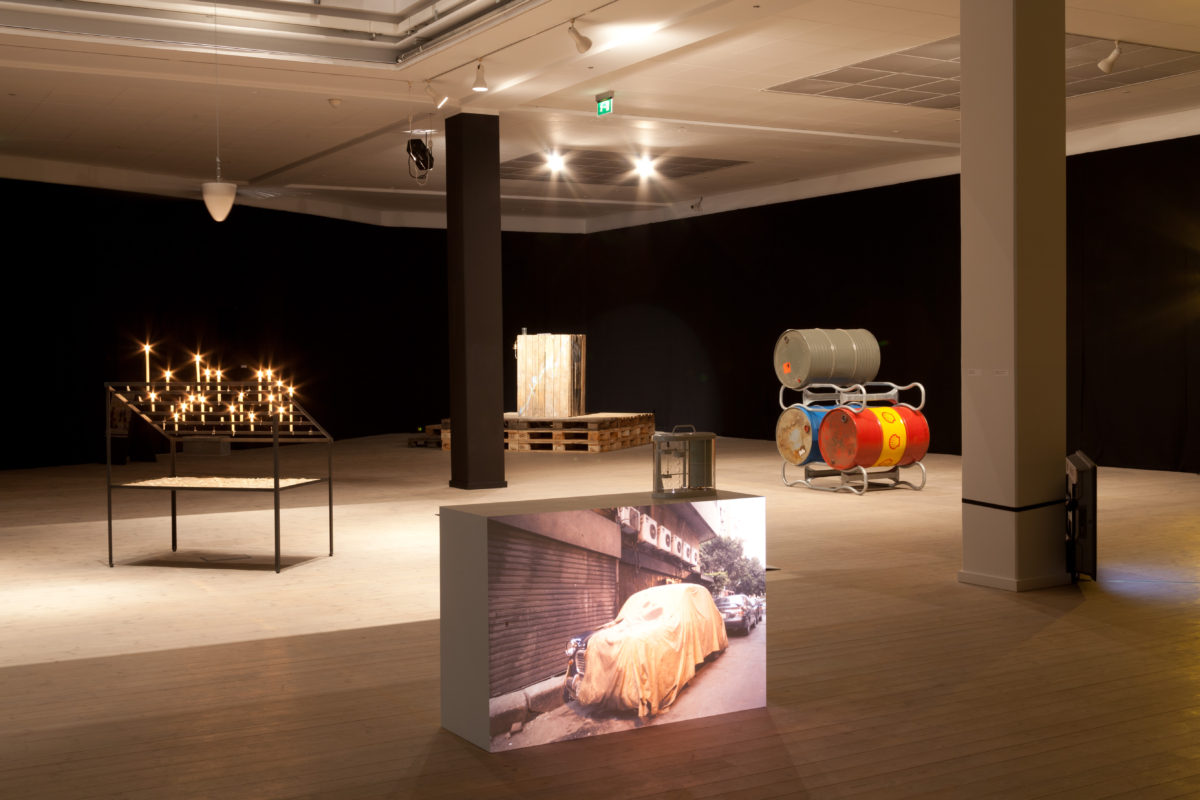

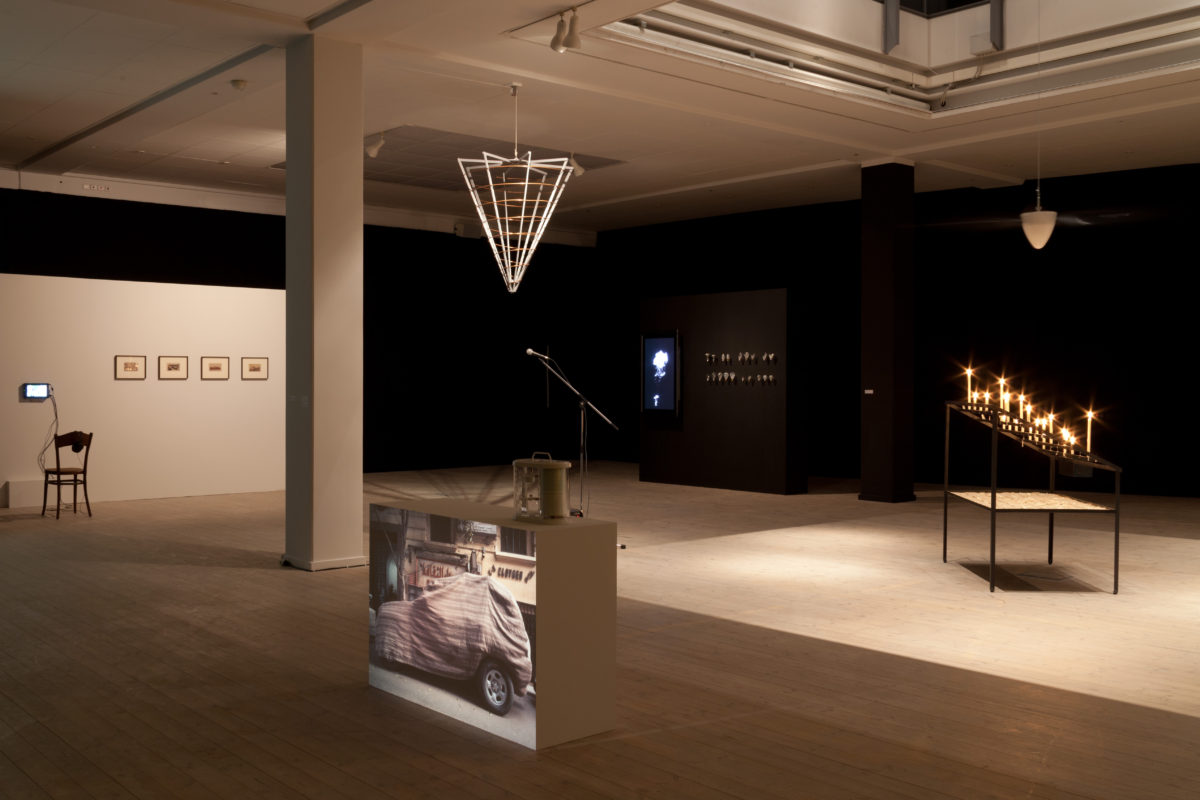

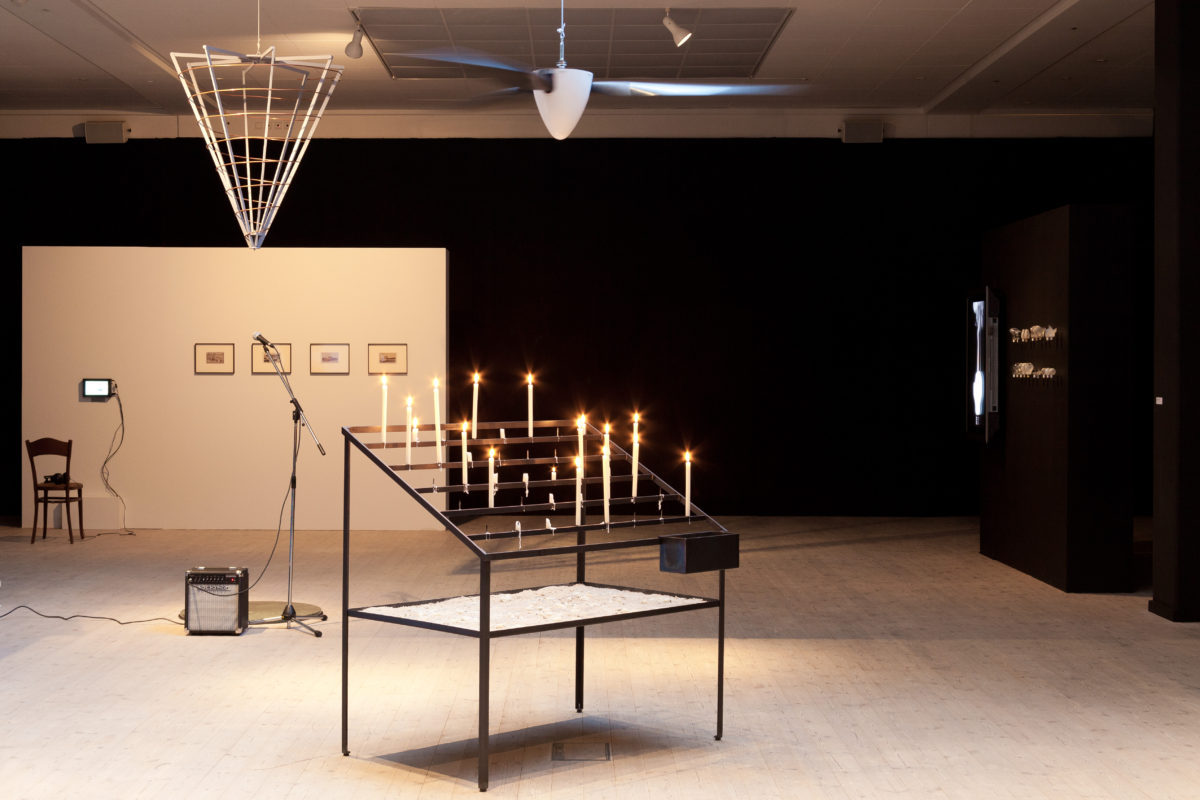
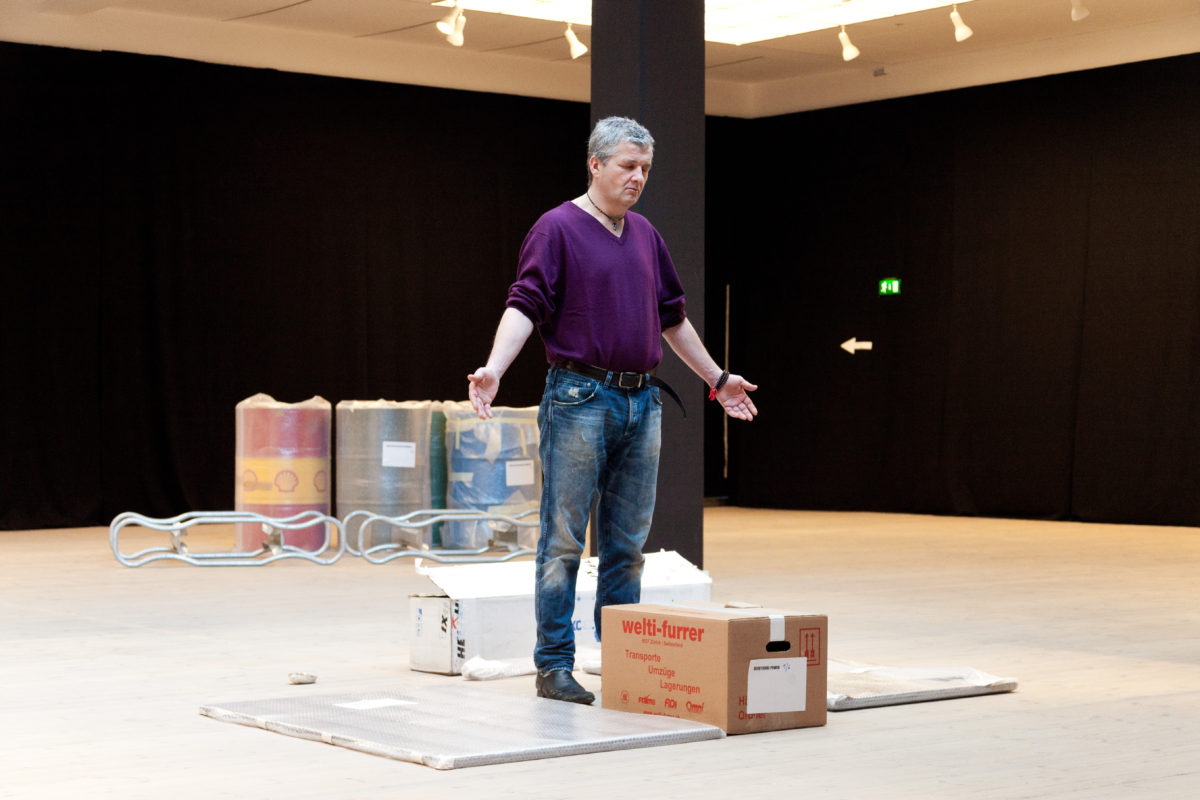
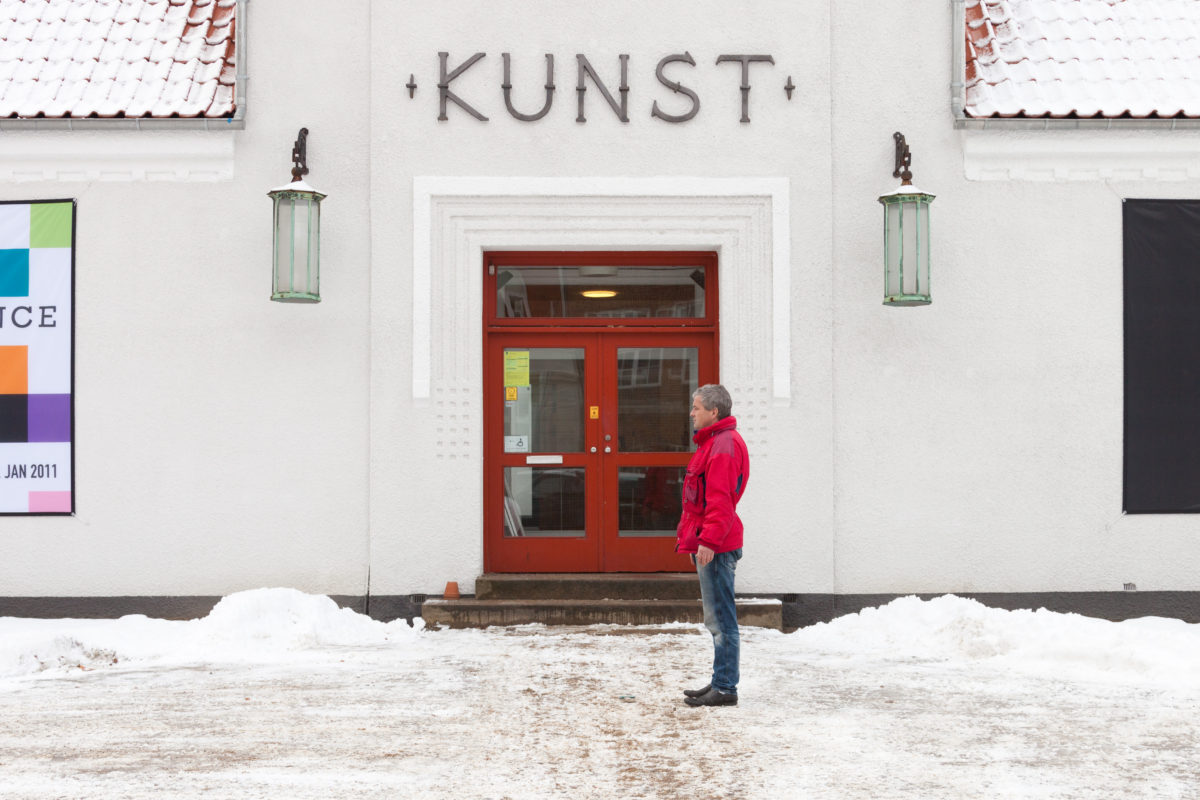
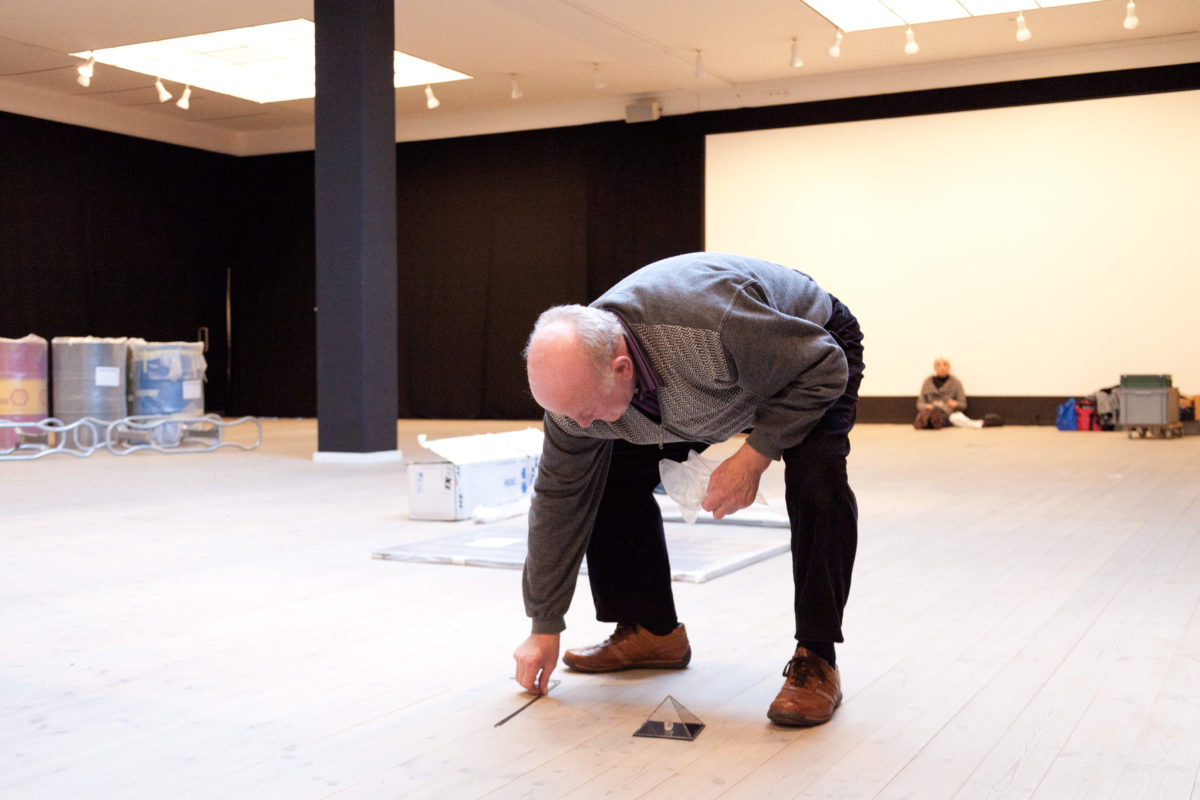

The art of Christina Hemauer and Roman Keller attempts to make sense of the loss of ideologies – in particular those of socialism, modernism, and environmentalism – which themselves once made sense of the world in terms of conviction, choice and sacrifice. The artists take up this particular thorny question of ideology through their research-based and interdisciplinary art practice neither with recourse to a condition of mourning, nor with a sense that the making and receiving of art should be restricted to a kind of goodwill gesture. Likewise they revisit forms of ideological expression, such as the manifesto speech (as witnessed by the performance Postpetrolism Was Heralded Here on 21 January 2011, 2006 – ongoing) and the workers’ song (The Postpetrolistic Internationale, 2008 – ongoing) not to fetishize them, nor to mock them, but with the full disclosure that the hard rhetoric of revolution has largely been stripped of its traction in affluent societies. Despite this, the difficult questions that arise when consequence and responsibility demand to be linked to real action, as well as thought, are ones which are not going to go away any time soon. Certainly not least while a purported radical ‘political’ position is frequently claimed quite cavalierly by artists and exhibitions alike.
Hemauer/Keller are undoubtedly highly wary of issuing straightforward critique or criticism. However, they offer the conditions for the analysis of evidence and criticality at the same time as their apparent inverse – unquestioning faith. They deal with the veracity of science and the vicissitudes of geopolitics in their investigations into the history of power generation, yet other works are concerned with manifestations of energy even less visible than electricity – the power of religious piety (Devotional Power, 2011) as well as the belief and practice of interpreting ‘earth energy’ (with From the Series Free Speech – Free Energy: Me, The Cosmos and The United Nations, 2007, and Energetic Cleaning, 2007/11). Similarly, the tenor of their work could be located between two seemingly irreconcilable poles of art practice – wry humor and dry earnestness. At the latter cardinal point, one might find the shamanistic seriousness exemplified Joseph Beuys, whose engagement with ecology is rather unavoidable in this Mitteleuropean context. Active from the early 1960s until his death in 1986, Joseph Beuys is often celebrated as a founding father of so-called ‘eco-art’, as well as being one of the founders of the Green Party in Germany. Yet maintaining that Beuys’ strategic vision could still have efficacy in today’s world would not only be politically disastrous, but artistically irrelevant. The charismatic Beuys adopted a persona with a mystical relation to an allegorized non-human world. This was typified by his belief that he spoke for animals “that cannot speak for themselves”. Such statements that claim special authority based on the premise that some people (i.e. Beuys himself, wilderness-focussed environmentalists, etc.) somehow know what nature wants seem acutely problematic today.
Hemauer/Keller’s work avoids the literal sclerosis of both the narratives of nature ventriloquism, duty and guardianship peddled by ‘eco-art’ on the one hand, and also the recourse to naked activism on the other. The artists do not work in an oppositional mode, but instead operate, as the title of the present exhibition suggests, through presenting or (re)uniting alternatives, or to paraphrase U.S. President Jimmy Carter’s prescient 1979 speech about oil dependency that is the subject of the artists’ documentary of the same name, by exploring “road[s] not taken”. Energy innovations that were not exploited, opportunities missed, and situations where society, like a driver who, knowing he has missed his exit from a highway, accelerates in the wrong direction in the hope of another turning, become the points of articulation in Hemauer/Keller’s work – not necessarily the breakthroughs. In this light several of the artists’ works explore micro-histories in the development of alternative (i.e. not fossil-fuel) energies. The story of the stillbirth of the world’s first commercial solar thermal power station dating as far back as 1913, for example. Looking back at such points diachronically, Hemauer/Keller’s strategy of reconstructing or re-enacting them in the present supplants the avant-garde language of boundary-breaking, and an entrenched logic based on ascending growth and relentless progress. In parallel they map such movements alongside an understanding of the major forces of modern art history from the point of view of the effects of petroleum-power’s dictatorship of the global economy for the past century.
How does abstraction or the Readymade seem from the perspective of the preserved remains of prehistoric plankton and algae? Or more prosaically, what does it mean that the defining financial impetus for modern art in America – the Guggenheim, the Rockefeller and the de Menial fortunes, for example – derived directly from mineral and oil exploitation? A ‘classic’ trajectory of art’s primary relation to ideology might arise with the historical avant-gardes of the 1920s and end with the effective collapse of socialism in 1989. Although it is not offerred without a dose of humor in the very act of issuing a manifesto, Hemauer/Keller’s proposal for refashioning the recent history of art in terms of ‘petrolism’ (and its anticipated future in terms of ‘post-petrolism’) presents a twist on this ideological or ethical history and condemns modernism as being inseparably intertwined with industrialization and, as the manifesto describes, “the option of disposing of energy in nearly unlimited amounts”.
Predating the upheavals in the Soviet Union and Eastern Europe of 1989, it is the so-called first and second oil crises of 1973 and 1979 which more profoundly mark recent petrolistic history. It is not so much as a collapse of a political system that was encapsulated by the latter events but something of a pre-emptive coup – or rehearsal – by an economic one. As the scarcity of oil was fabricated and its value simultaneously artificially raised, the immense profits that were realized by the petroleum industry flowed into international banks and stock markets while safeguarding the oil barrel and the dollar as the world’s key economic indicators. This new economic paradigm based on the trading of virtual capital – and on information, knowledge and communication – took place alongside an effective uncoupling from actual commodities and manufacturing per se. In an apparently coincidental move, the autonomous modernist object was being discredited alongside the emergence and monetization of conceptual ‘immaterial’ art.3 Hemauer/Keller’s aforementioned documentary film A Road Not Taken (2010) allegorizes the status of this dual physical loss and simultaneous transfer into enhanced symbolic currency. Focussing on the solar panels which President Carter installed on the roof of the West Wing of the White House, only to be taken down by President Regan seven years later, the film records their recovery and (although Carter had feared them merely becoming “museum pieces”) constitutes their re-evaluation through art action as symbols and talismans for a re-invigorated debate about energy policy and political consequence. In spite of successive administrations’ insistence that the presence, or otherwise, of solar panels on the roof of the most famous residence in the world was merely a matter of an individual household’s economy, the star of the documentary is not the panels themselves but what they continue to represent.
“Happiness is wastefulness … we must find new ways to waste”, declares The Postpetrolistic Internationale. What can this mean for so-called ‘ecoaesthetics’, the subject of 2011’s programming at the Aarhus Art Building of which Hemauer/Keller’s exhibition forms a part? The artists reject the mindset of restrictions, fears, limits and prevention which single-mindedly sees society’s ills as the consequence of too much growth, rather than not enough of the right kind of growth. In 2011 climate change has arguably already ‘gone mainstream’ as a cultural and political agenda, no longer cast as a purely ‘green’ concern. Alongside this, with the inundation and proliferation of personal, corporate and governmental positions, Hemauer/Keller’s practice continues to ask what the role of art is, and how and what it can achieve, by balancing humor and seriousness, detachment and engagement.
Introduction text of the exhibition catalogue by Latitudes (Max Andrews & Mariana Cánepa Luna)